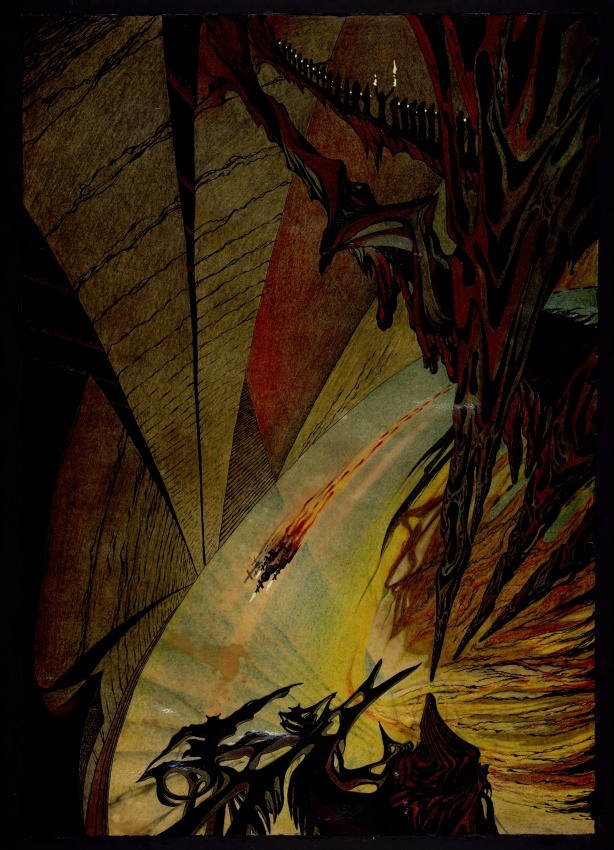Motion of a heavy rigid body in space
No. 252, 1972
(Geometry and mechanics)
India ink, gouache, and pencil on paper, 43.5x61.5 cm.
This elaborate, cavernous, and somewhat warped interior, a virtual medieval time capsule of creatures existing amid stone columns and stalactites, creates an environment in which symmetric rigid bodies can roam randomly through space. Here, the idea is to interpret graphically the study and integration of the equations of motion of a heavy rigid body in three-dimensional space, a topic that serves as a central problem in physics, Hamiltonian geometry, and topology. In this particular case, the equations in mind are ones known as Euler-Poisson equations. Essentially, we can think of the situation in this way: if a rigid body is shaped arbitrarily, then it is not possible to find its integrals of motion. As a result, such bodies will somersault in space, moving chaotically, and the parameters of motion will vary too in an irregular, random way. In this case, however, the motions of the rigid bodies do have symmetry and the equations of motion are integrable.
